
Pokhara Airport: A Victim of Corruption and China’s Coercive Diplomacy
Nearly 50 years after its conception in 1975, Nepal’s Pokhara International Airport opened to much fanfare on 1 January 2023.
The airport’s construction was stalled for decades due to political instability, budgetary concerns and red tape until China stepped in.
In 2011, Nepal’s then finance minister Barsha Man Pun signed a memorandum of understanding with China CAMC Engineering, a company affiliated with China National Machinery Industry Corporation (SINOMACH) for the construction of the airport.
This was before the bidding process had started for the project. Finally, in February 2012, the Civil Aviation Authority of Nepal (CAAN) invited bids for constructing the airport. However, there was a caveat. Since the project was funded by the Exim Bank of China, only approved bidders from a list were allowed according to the report.
Of the 22 firms that purchased bid documents, only nine submitted bids. Of those nine, six bids disappeared as they were not on the list provided by China’s Exim Bank.
Only three bidders remained, and all of them were Chinese firms. CAMC Engineering quoted a price of $305 million, Sinohydro Corporation quoted $337.82 million and China International Water and Electric Corporation quoted $349.28 million.
The lowest bid, that of CAMC Engineering, was 85 per cent higher than the government’s estimate of around $166 million. It did not end there. After the price was eventually agreed at $215.96 million, the Exim Bank added a new clause — the establishment of a joint escrow account between CAAN and the bank where income from all of Nepal’s airports would be deposited.
Eventually, it was agreed that only the revenue generated from Pokhara would be deposited in the escrow account.
However, construction could only begin in April 2016 after then prime minister K.P. Sharma Oli travelled to Beijing and signed the soft loan deal. The airport was inaugurated seven years later.
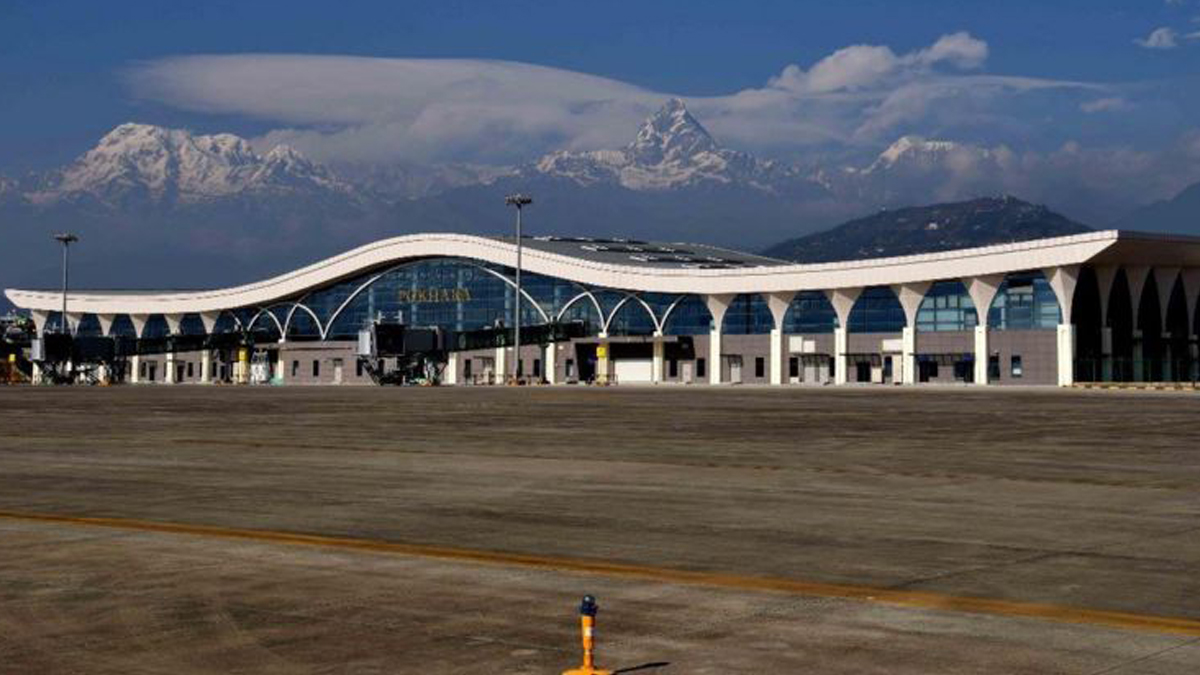
Engineers Uncover Construction Irregularities
After the Tihar festival of 2080, the Commission for Investigation of Abuse of Authority requested documents related to the construction of Pokhara Airport from the Civil Aviation Authority of Nepal. Despite repeated requests, the director-general of the authority, Pradeep Adhikari, hesitated to provide the documents. The authority’s team called him to the office.
After some negotiation, the Nepal Civil Aviation Authority eventually provided documents and details regarding the Pokhara Airport construction process.
Following this, one of the engineers at the CIAA remarked, “The most significant irregularity observed thus far pertains to the physical construction. With bold leadership, positive outcomes can be achieved.” Those involved in the investigation assert that the level of irregularities during the airport’s construction may be unprecedented.
Height reduced, costs saved
The airport was intended to be elevated according to the agreement between the Nepal Civil Aviation Authority and China CAMC Engineering Company Limited, using soil and gravel sourced from a distance of 5 km to increase its height compared to its current state.
However, the Chinese company chose to utilize soil and gravel from the construction site itself, allocating 80 million US dollars solely for this purpose. By using onsite materials, the company managed to significantly reduce the substantial costs associated with transporting soil.
The report issued by the Office of the Auditor General last year indicates that the elevation of the runway was necessary.
According to sources within the authority involved in the investigation, while this decision has reduced costs, it has also necessitated the removal of a water tank. Additionally, there is now a situation where aircraft may have to take off with reduced payloads due to the airport not being elevated to the required height in deeper sections.
Essentially, this approach has resulted in cost savings for the Chinese company while inflicting long-term losses on Nepal. The Auditor General stated in their report, “Given that the builders were expected to source raw materials (stone, soil, and gravel) from a distance of 5 kilometers, paying royalty, the impact on external procurement and transportation by businesses should be analyzed.”
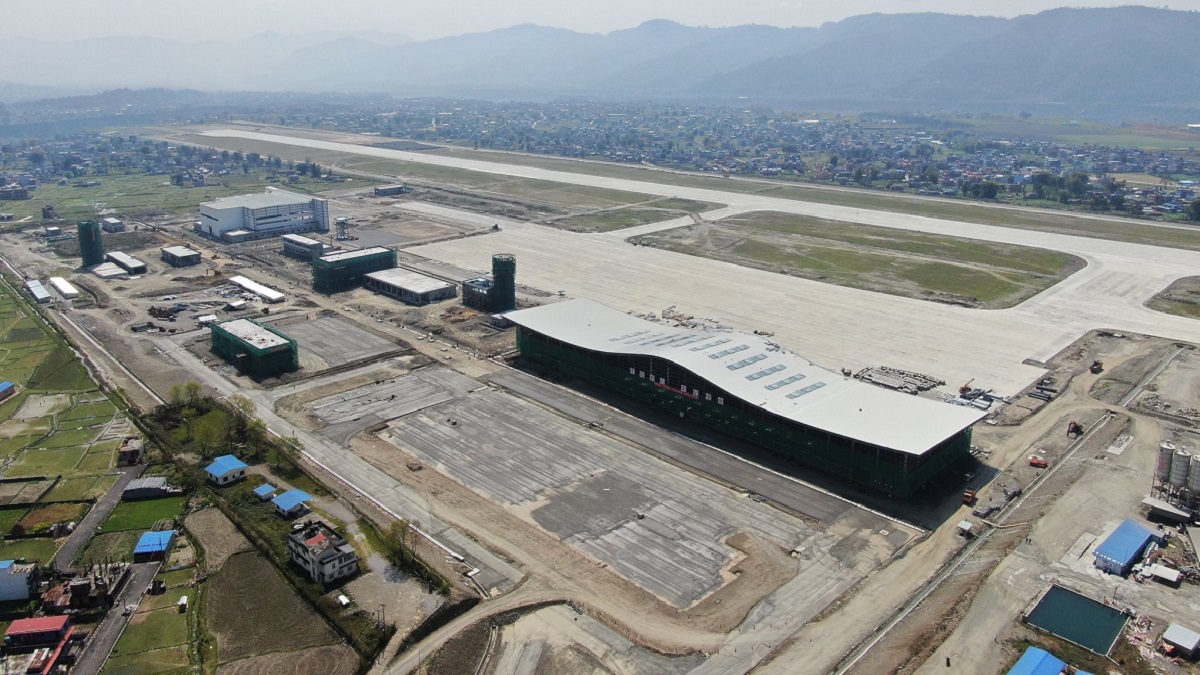
Tax Exemption and Payment Discrepancies:
The Civil Aviation Authority has awarded a contract to a Chinese company using the EPC model.
According to one of the authority’s engineers, in this model, engineering design, material procurement, and construction work are completed, and the project is then handed over to the relevant agency.
Once the contract under this model is finalized, additional payments are not made by adding items again.
However, despite the initial contract terms, the Chinese company submitted a bill of quantities (BOQ) with added work and responsibilities during the construction phase, resulting in an additional payment of approximately 2 Arba rupees.
Even the consultants have pointed out that it would be wrong to pay in that manner, yet the authority appears to have released the funds.
The Auditor General’s office has also addressed the issue of tax exemption with significant concern.
The Civil Aviation Authority’s Pokhara Airport project has been included in the ‘master list,’ leading to exemptions on customs duties, tariffs, and VAT. The contract itself specifies that the responsibility for paying taxes and fees lies with the contractor.
Apart from this, questions have also been raised about the selection of Nepalese consultants.
From a budgetary standpoint, a Korean consultant was appointed for the construction of Bhairahawa Airport, which is half the size of Pokhara Airport.
However, in Pokhara, a Nepali consultant named ERMC was appointed without international competition, and the amount was paid based on their decision.
According to a technician from the Civil Aviation Authority, the documents, including the report prepared by the contractor company, should be submitted to the consultant. The consultant should approve it only after thorough study and on-site inspection before submitting it to the Civil Aviation Authority.
It was decided that the authority would also follow the same process to engage with the contractor, making the role of the consultant secondary.
An engineer from the authority stated, “CAAN continued to give directly to the contractor, and the contractor directly gave to CAAN.” The consultant had no role. Such practices are not common in contracts of this magnitude.
Contractor’s Exchange Rate Tactics
According to the details mentioned in the agreement made in 2016, the exchange rate of the US dollar was 82 rupees.
Payments and transactions were supposed to be made by fixing the exchange rate on the day of the contract. However, later, the payment was made according to the exchange rate on the day of the transaction.
As some of the airport works are still pending, the current exchange rate seems to be paying the bill at Rs 132 per US dollar.
“After the submission of the bill, there was a huge loss when the transaction was done according to the rate on the day of payment,” said a Civil Aviation Authority source. “It seems that the authority has suffered a loss of at least 2 Arba rupees.”
According to the contract agreement for the construction of the airport, the contractor (a Chinese company) had to appoint the consultant. However, they left the responsibility of appointing a consultant and claimed the expenses for that. The authority itself had appointed a consultant. Authority sources said that when the exchange rate changed, the amount increased by about 65 percent.
It is not possible to change the rate of some works after the contract agreement. However, its basis and justification must be carefully confirmed. It should have been considered that if the lowest bidder during the competition gets the contract, then increasing the rate later would not be unfair to the other party.
The authority source said, “If there are questions about new issues and rates, the consultant and the representative of the authority should sit down and resolve it.”
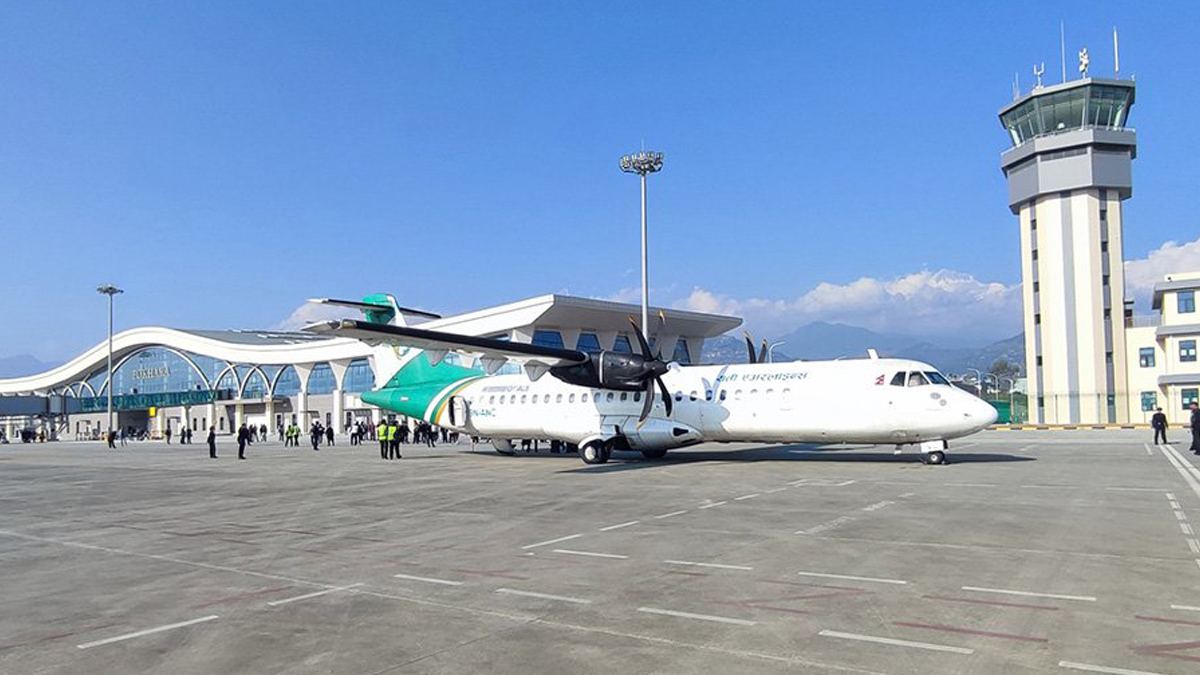
Question on Quality
According to authoritative sources, basic documentation and data analysis were not conducted during the construction of the airport.
A soil test report should have been submitted prior to the commencement of the construction, yet this document was not located.
The contracting company failed to provide certain designs of buildings and structures to the consultant.
An auditor who examined the project’s accounts identified the construction of Pokhara Airport as the most serious instance of malpractice thus far.
As per an authority technician, the drainage system was implemented without considering Pokhara’s rainfall rates and the capacity for water drainage during the rainy season. Additionally, he noted that the foundation required for the terminal building was not excavated. Moreover, he highlighted numerous other irregularities that were not subjected to quality testing, which should be addressed separately.
Dozens of irregularities concerning the construction of Pokhara Airport have been uncovered by authoritative sources.
The Authority is also investigating Pradeep Adhikari, the Director General of Nepal Civil Aviation Authority, following complaints of illicit wealth acquisition.
Only 5 International Flights
Only five international flights took place so far, prompting growing concerns about the viability and impact of the ambitious project.
The first international flight landed on June 18, when a Sichuan Airlines aircraft from Chengdu, China, touched down at PRIA. The flight, which carried 84 Chinese guests participating in the Dragon Boat Race Festival at Fewa Lake, marked a historic moment. However, the return journey was an empty flight via Kathmandu, raising questions about the sustainability of international routes from PRIA.
The second international flight, a Druk Air service from Bhutan’s Paro International Airport, landed on September 8. The flight brought only three passengers to Pokhara and departed with 42 foreign passengers, with the Civil Aviation Authority of Nepal (CAAN) noting it as PRIA’s first commercial flight. This development raises doubts about the airport’s ability to attract regular international travelers.
On November 8, two Chinese cargo aircraft arrived in Pokhara, transporting relief materials provided by the Chinese government for earthquake victims in Jajarkot and Rukum. While this humanitarian effort showcased the airport’s potential role in facilitating aid operations, it also underlined the lack of regular commercial flights utilizing PRIA.
Later, on November 23, a Himalayan Airlines plane brought a team of Chinese athletes to Pokhara. The flight included 95 people, comprising players and sports technicians, highlighting the airport’s capability to cater to special events.
The technicians who worked there said that there was a significant amount of irregularity in the construction process of this project, which was presumed to be politically influenced even before construction began.
After its completion, this airport, touted as a project of national pride, has fallen victim to geopolitical interests.
With the opening of the airport, many anticipated that the air traffic congestion in Kathmandu would decrease and that Pokhara would become connected to international cities.
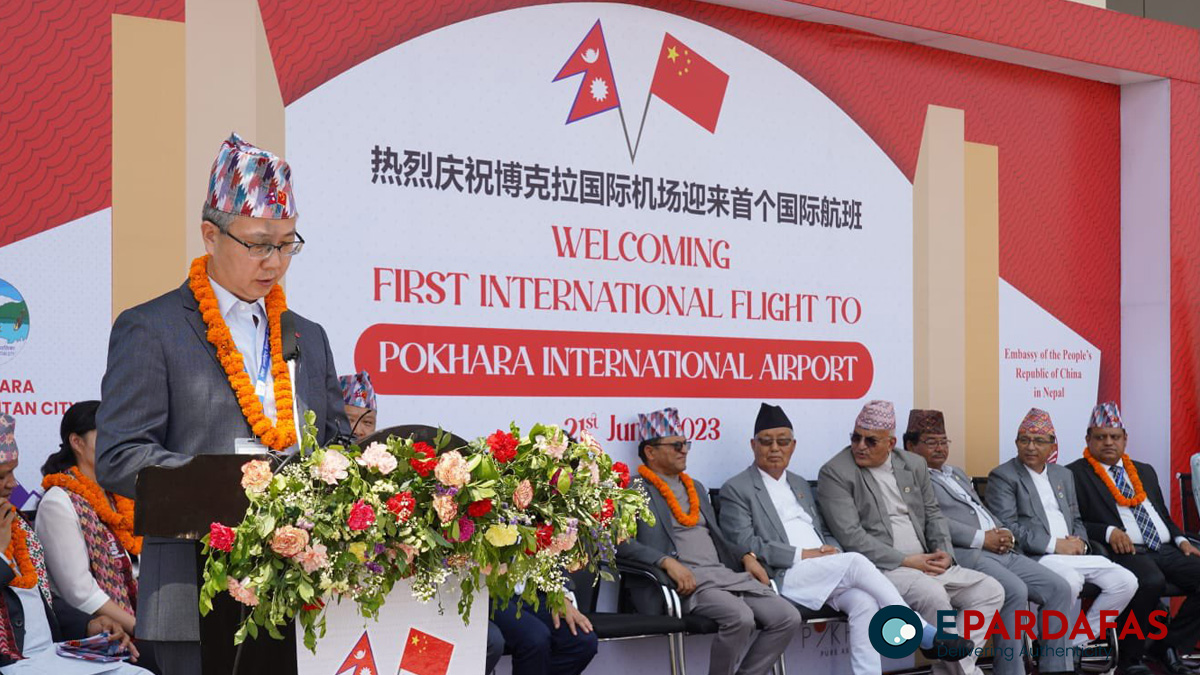
Airport’s Loan Burden
In the first year, Pokhara’s international airport and the old airport collectively generated 330 million rupees. The old airport continues to host helicopters, ultralights, and Jomsom flights. Jashoda Regmi, the information officer of Pokhara International Airport, reported that only approximately 0.4 million rupees were earned from international flights. This income primarily originated from Bhutan’s Druk Air, which returned with 42 passengers. Although other planes arrived with tourists, they departed from Pokhara without carrying any passengers.
The loan installment is notably high compared to the airport’s income, funded by a loan from China’s Exim Bank.
CAAN is servicing the loan and interest of Pokhara International Airport using funds from Pokhara, as well as from other sources and income from various airports .
Political Patronage
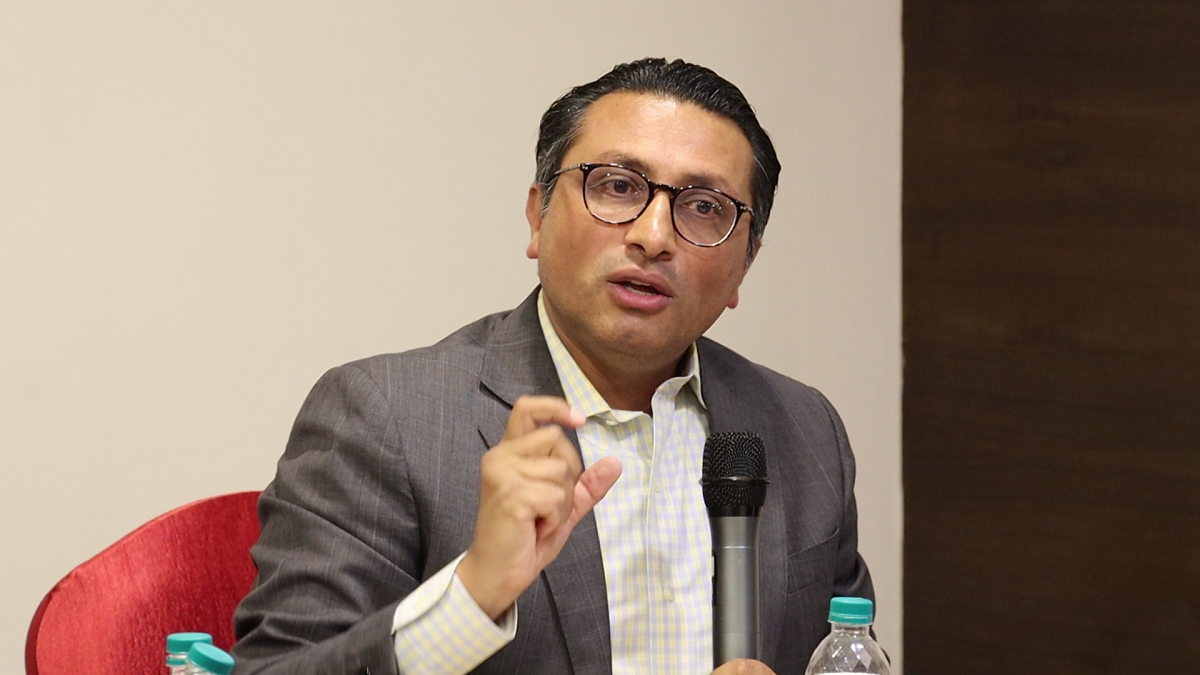
Economist and MP Dr. Swarnim Wagle asserts that the significant increase in the initial costs of the Pokhara airport construction project, followed by only minimal reductions, is a clear indication of ‘wrong intentions.’ He says that such endeavors were frequently facilitated by political patronage, where political figures misused their influence to secure advantages or benefits.
China Propagandizing Nepal’s Participation in BRI
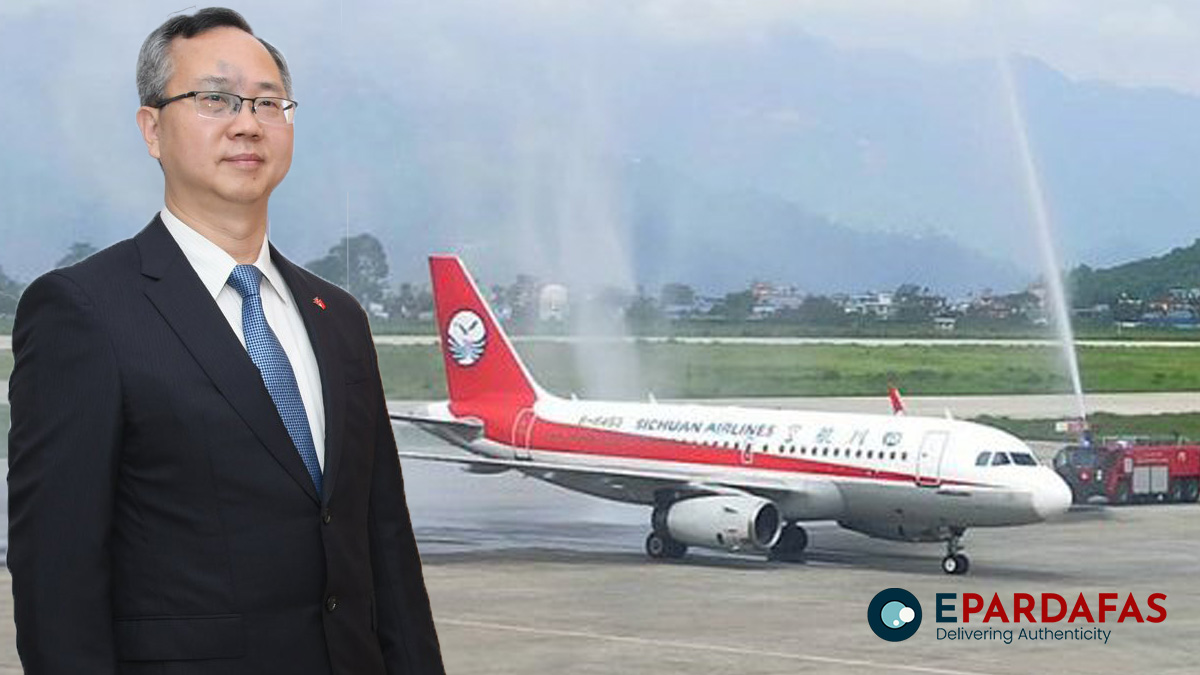
With the airport performing poorly and struggling to sustain itself, questions are arising about whether it could be a debt trap set by the Chinese side to corner Nepal.
Even before the airport was inaugurated for takeoff, troubles had begun to mount. A day prior to the opening, the Chinese embassy in Kathmandu unilaterally declared that the Pokhara International Airport was a “flagship project of China-Nepal Belt and Road Initiative (BRI) cooperation.”
“This is the flagship project of China-Nepal BRI cooperation. Warm congratulations to the Nepali Government and the Nepali people!” the embassy proclaimed.
This declaration unsettled the Nepalese government, with newly-appointed Prime Minister Pushpa Kamal Dahal ‘Prachanda’ expressing concerns about why and how this issue had surfaced at such a critical time.
Similarly, China’s ambassador to Nepal, Chen Song, has been making controversial comments one after another in public.
Ambassador Song said that Pokhara Airport is under the BRI project. He made such a controversial statement at the first international commercial airway landing event at Pokhara International Airport.
In a social media post, Ambassador Song wrote, “Today, the new Chengdu-Pokhara air route marks a new achievement for the trans-Himalayan multi-dimensional connectivity network between China and Nepal, which is a priority cooperation field between China and Nepal under the BRI initiative.”
Today, the new Chengdu-Pokhora air route marks a new achievement for the trans-Himalayan multi-dimensional connectivity network between China and Nepal, which is a priority cooperation field between China and Nepal under the BRI initiative. pic.twitter.com/lILgxdXbu7
— Ambassador Chen Song (@PRCAmbNepal) June 21, 2023
Yeti Airlines crashed in Pokhara
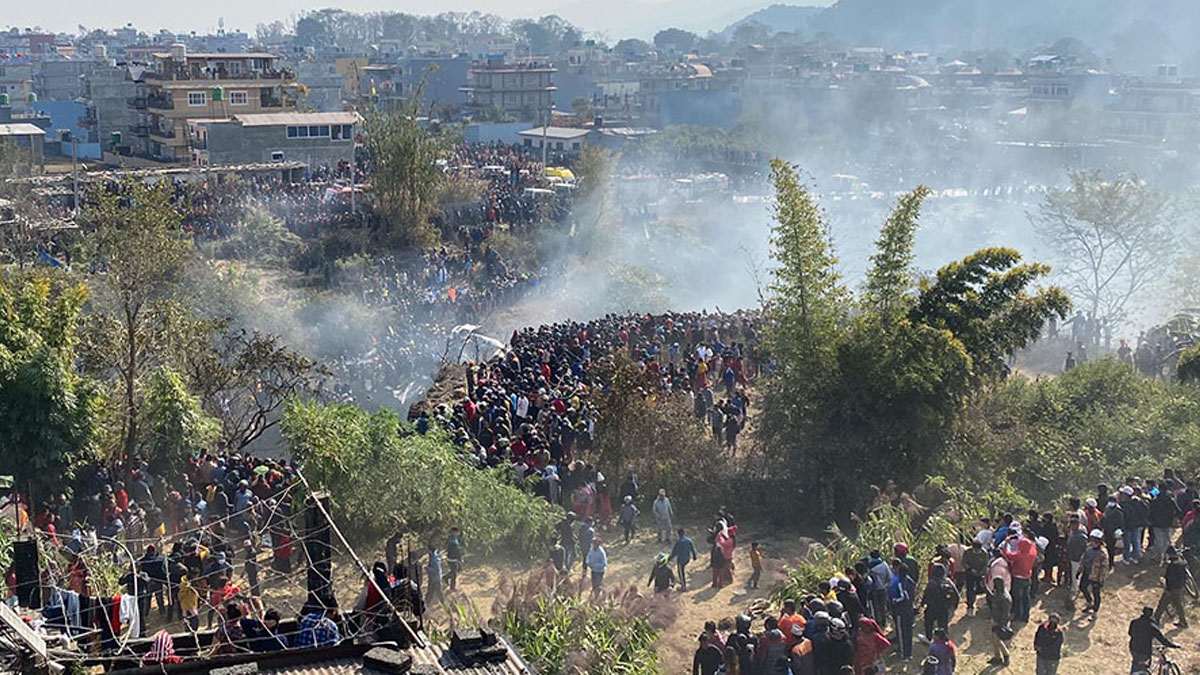
Two weeks after the inauguration, the airport made international headlines again, but for all the wrong reasons.
A Yeti Airlines twin-engine ATR 72 plane crashed while attempting to land at the airport. The plane crashed on the bank of the Seti River between the old airport and the new airport.
Tragically, all 72 people onboard the plane were killed in the crash, including two infants, four crew members, and 10 foreign nationals.
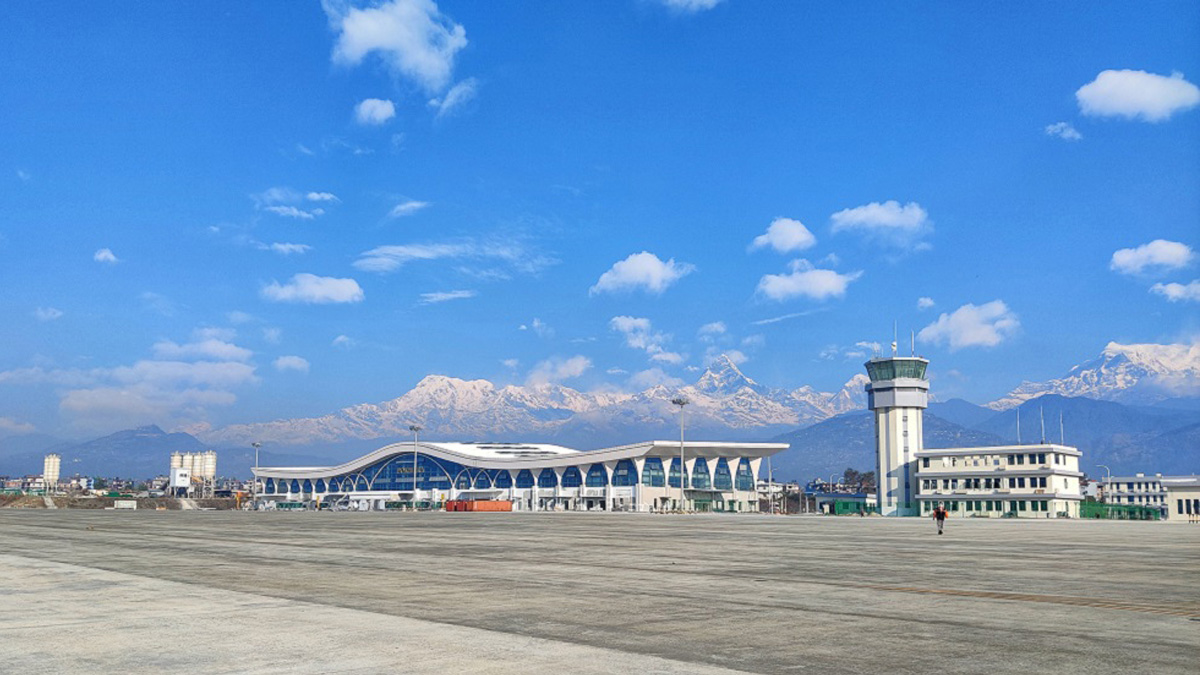
The narrative surrounding Pokhara International Airport serves as a cautionary tale of the perils that can accompany foreign investment and collaboration, particularly when driven by geopolitical ambitions. While initially heralded as a symbol of progress and connectivity, the airport’s trajectory has been marred by financial burdens, operational setbacks, and safety concerns. The heavy-handed involvement of Chinese entities, from the opaque bidding processes to the questionable construction practices and subsequent attempts to assert control under the guise of the Belt and Road Initiative, has underscored broader anxieties about the true intentions behind such projects. Moreover, the tragic crash of the Yeti Airlines plane serves as a stark reminder of the human cost that can result from rushed, poorly executed endeavors driven more by political grandstanding than genuine development goals.
Beyond the immediate implications for Nepal, the Pokhara International Airport saga epitomizes the broader risks associated with China’s ambitious global infrastructure initiatives. While presented as benevolent endeavors aimed at fostering connectivity and economic development, these projects often come with strings attached, trapping nations in cycles of debt dependency and geopolitical coercion. As Nepal grapples with the fallout from the airport’s tumultuous journey, it serves as a sobering reminder for countries worldwide to approach foreign investment and collaboration with vigilance, ensuring that development initiatives serve the interests of their citizens rather than advancing the geopolitical agendas of external powers.
Input From www.onlinekhabar.com Reports. Published in Nepali.
- Former King Gyanendra Extends Condolences Over Pahalgam Terror Attack
- Nepal Firmly Opposes Terrorism in All Forms: Foreign Minister Dr. Arzu Rana Deuba
- Protests Erupt Outside Pakistan Embassy in Kathmandu Following Terror Attack in Kashmir
- Chinese Export Factories Hit Pause Amid Tariff War Fallout, Signaling Deeper Economic Woes
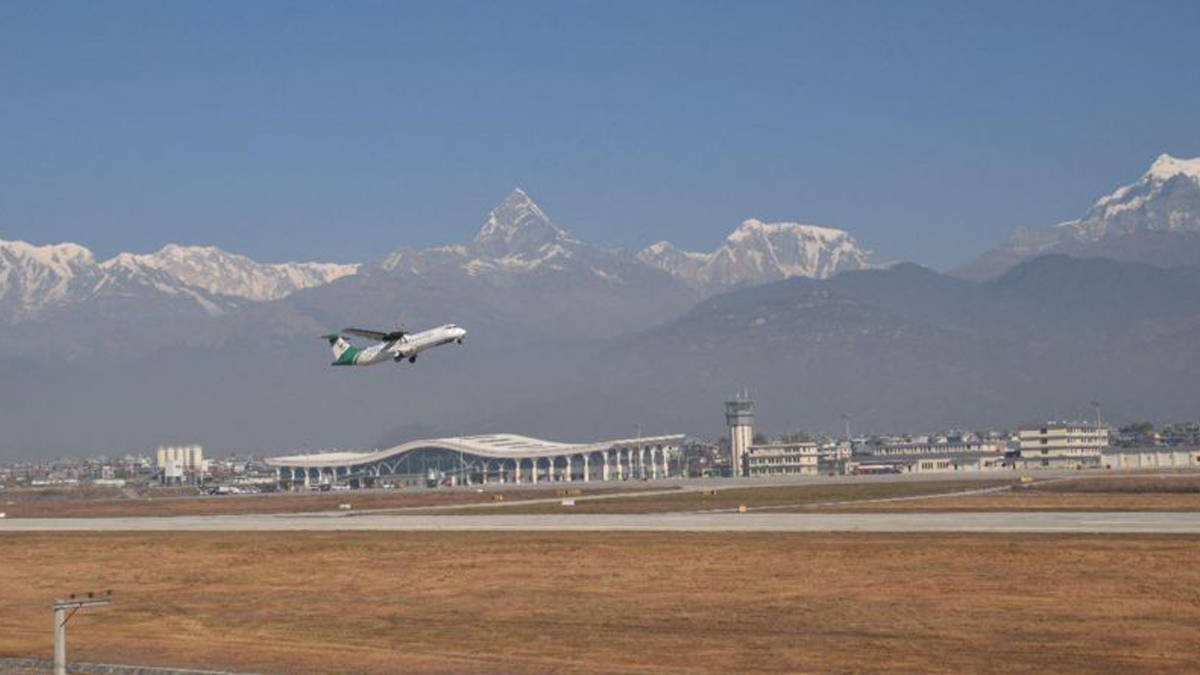
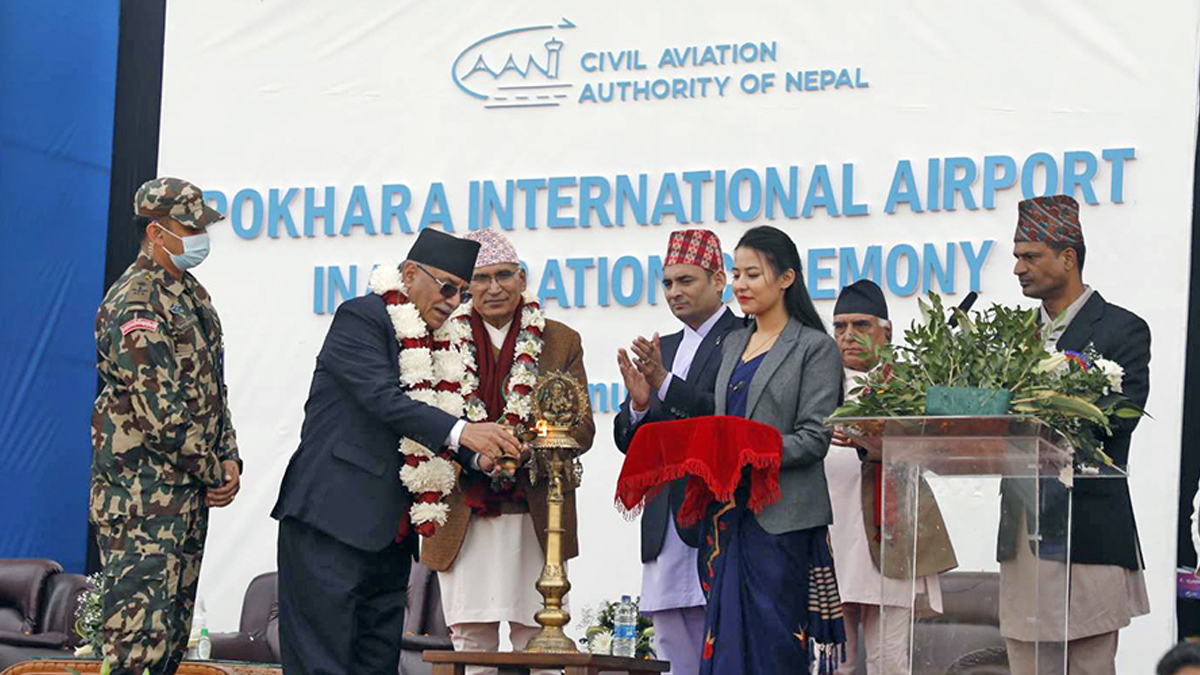



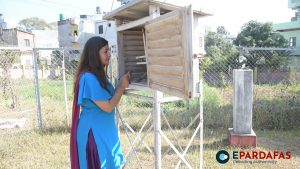








Comments